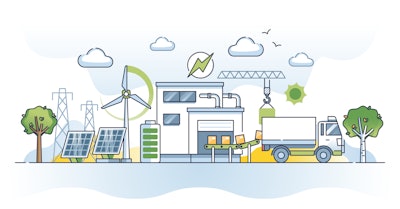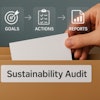
In recent years, corporate sustainability efforts have focused on measurement and reporting. We’ve heard the phrase “what gets measured gets managed” countless times and taken it to heart. The result has been a robust carbon accounting and reporting universe filled with tools that can estimate the emissions for every industry, and an alphabet soup of reporting standards. This result, however, hasn’t been particularly promising. Even companies with the most ambitious climate goals and robust measurement and accounting programs have had trouble cutting their emissions. It turns out that simply measuring something doesn’t mean it’s going to be managed. Measurement is an important first step for an organization to understand and prioritize sustainability efforts. However, sustainability is about the real-world impact that can only be achieved with real-world investments, not an endless cycle of measurement and reporting. Put another way, what gets measured might get managed if you can show that the upfront costs of sustainability are truly investments in a classical business sense, with benefits including ROI, customer retention and risk mitigation.
When your organization is part of a complex supply chain, achieving sustainability targets is made difficult because the investments needed to meet your sustainability goals often involve assets outside of your organization. In these cases, a business justification is especially important, since achieving your targets will only come from partnering with other organizations and showing them the benefits of either investing in their facilities on your behalf, or accepting direct investments for actions and equipment that they might not otherwise purchase.
The first step is to map the key outcomes that apply to your business that can be enhanced by sustainability- and ESG-linked investments. For example, a product’s unit economics can each be improved by changing designs to use less raw material, adjusting production dies and molds to waste less material, and switching to equipment which uses less fuel and is easier to maintain. An existing factory or distribution center can benefit from lower insurance costs by investing in solutions for climate resilience. Meanwhile, a brand-new factory can benefit from a lower cost of capital by investing in future-proof clean technologies that reduce the risk that the facility ends up as a stranded asset due to changing market demands or regulatory conditions.
In all of the examples above, the benefits of sustainability-driven efforts actually benefited the business as a whole. Instead of a green premium, these businesses would benefit from a green return.
As sustainable technologies improve and become more mature, these returns will only improve as well. Holistically studying the impacts of sustainability and ESG investments allows supply chain leaders to build a business case for sustainability that goes beyond marginal abatement curves. Simply focusing on minimizing the cost of sustainability is not a winning strategy when the cost of capital is high. Instead, it’s critical to show how sustainability-linked investments maximize return and positively impact financial outcomes. This is especially helpful when making a case for investment to a key supplier or manufacturer, who may be reluctant to make the process, material or equipment investments standing between you and your sustainability goals.
There is, of course, the elephant in the room. Is it even worth considering ESG and sustainability given all of the controversy and political turmoil surrounding the term? After all, a modern supply chain is fine-tuned, and ultimately performs best by minimizing all sorts of risk, especially those like political risks that live outside your control. The answer, surprisingly, is yes. There are several real unassailable trends that have gained momentum in the last couple of years. In the wake of the Inflation Reduction Act (IRA), passed in August 2022, 80% of money allocated by the bill for clean energy and sustainability projects has gone towards Congressional districts represented by individuals who publicly oppose ESG messaging. Deployments of large, utility-scale solar projects follow the annual resource (how much sunlight is available in a given year) independent of political boundaries. And regardless of the political sentiment, over two-thirds of consumers consider sustainability positively when making at least some of their purchase decisions — nearly sixteen times the number that are influenced negatively by sustainability. Fundamentally, the science and economics of sustainability are sound, and while reporting frameworks and standards may change, the real-world drivers which led to the creation of ESG remain. The bottom line is that while the term “ESG” is facing backlash and the name will change as it has in the past, these principles are being “hardwired” into financial strategies in all but name at full speed. The ROI of sustainability not only shows up at the level of the individual initiative, but increasingly contributes to the overall financial position and investability of the company as a whole.
Ultimately, sustainability-linked investments result in reduced liabilities, reduced risk of stranded assets and reduced risk of regulatory backlash, and improved unit economics and supply chain resilience. Quantifying and clearly communicating these financial and performance benefits, on top of the pure ESG benefits, is critical to move beyond measurement and reporting to achieve real impact.



















